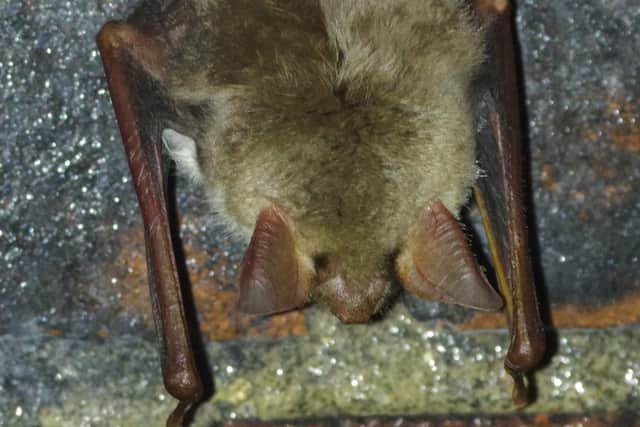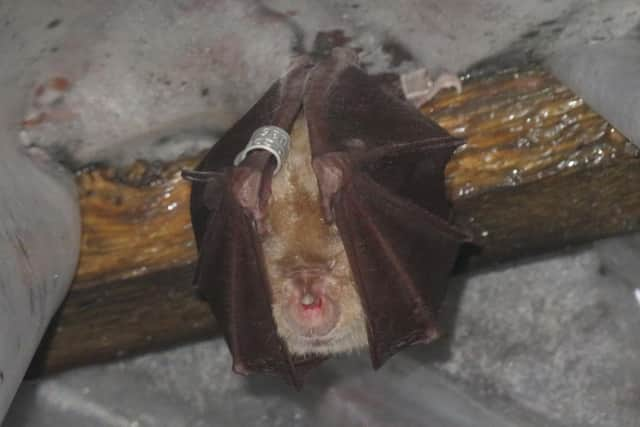Shock as bat species declared extinct 'could be recolonising in West Sussex'
and live on Freeview channel 276
The greater mouse-eared bat – Myotis myotis – was declared extinct in Britain in 1992. But since 2002 a single male has been recorded hibernating in disused railway tunnels in West Sussex and was thought to be the only one in existance in this country.
Officially known as ‘Britain’s rarest mammal,’ the bat was thought to be a vagrant that had crossed the channel from France where there is an established population and took up residence in Britain.
Advertisement
Hide AdAdvertisement
Hide AdHowever, during this year’s National Bat Monitoring Programme on January 14 members of Sussex Bat Group were astonished to find a second greater mouse-eared bat hibernating in the network of tunnels, in addition to the single existing known male, who has been hibernating in the area for the past 20 years.


Now questions are being raised over whether a small pioneer population of greater mouse-eared bats are recolonising in West Sussex.
Sussex Bat Group spokeswoman Sheila Wright said: “This is a hugely important discovery for the Sussex Bat Group and demonstrates the importance of regular monitoring of bat colonies – we could have missed this highly significant find of the second greater mouse-eared bat in Britain. It also shows how important it is to safeguard these hibernation sites for bats.”
Experts say that species recovery programmes are vital to mammal conservation efforts, required due to the threat from anthropological pressures in the 21st century such as roost loss, habitat loss and fragmentation.
Advertisement
Hide AdAdvertisement
Hide AdThe Sussex Bat Group is working in partnership with Vincent Wildlife Trust to restore the greater horseshoe bat – Rhinolophus ferrumequinum – range in Sussex where it had been absent for more than 100 years.


Like the greater mouse-eared bat, records of hibernating greater horseshoes were found in the network of disused railway tunnels, and eventually in 2019 a small pioneer breeding colony was identified in a stable block in West Sussex.
Now Vincent Wildlife Trust and Sussex Bat Group are working hard to raise funds to buy the building, which was at risk of collapse, and rebuilding works are now underway to save the breeding roost whilst the bats are away hibernating.
Dr Stephanie Murphy of the Sussex Bat Group added: “There are now many questions for us to answer: is there already a small pioneer population of greater mouse-eared bats recolonising Sussex and we just don’t know where they are breeding, as in the case of the greater horseshoe bat, or, as result of climate change and the hottest summers on record in the UK, are we getting greater mouse-eared bats just beginning to move over from mainland Europe to settle in the UK?”